Getting to Know AI Voice Assistants
AI voice assistants have slid into our lives smooth as butter, changing up both our daily grind and business games. Peeling back the layers on why they’re big time and what to watch out for keeps small and medium-sized businesses (SMBs) in the loop when folding in AI magic.
Why AI Voice Assistants Matter
Think of AI voice assistants as your digital help—you talk, they get it, and they do their thing with a simple command. They’re like your go-to for tackling tasks, from digging up info to kicking off actions, making life a breeze compared to the old-school way. With over 3.25 billion of these digital sidekicks worldwide, it’s no wonder they’re shaking up how businesses cozy up to customers and get their wheels turning (Infobip),.
These assistants aren’t just techy toys—they’re business life savers. By handling routine chatter and easing the load, they free up employees to tackle the meatier problems.
| Goodies of AI Voice Assistants | What’s the Deal? |
|---|---|
| Better Customer Vibes | Answers right away, folks leave happy. |
| Gets More Done | Slices through the busy work for the team. |
| Open to All | Welcoming vibe for everyone, including those needing a bit more accessibility. |
| Always On | Your ’round-the-clock customer crew. |
The Worry Part of AI Voice Tech
But let’s pump the brakes a sec—there’s a flip side. These gadgets grab personal tidbits like your voice prints, what you gabbing about, your fave stuff, and where you’re zipping to, which can leave users feeling like backup dancers on a privacy stage (Impala Intech). A few years back, Amazon’s Alexa had a hiccup—giving bad actors a sneak peek at chat logs and deets, which waved the red flag on security goof-ups (Impala Intech).
AI assistants are aces for streamlining stuff, but they can trip on biases and run into ethical snags with data fun and games. Before your business dives into AI tech, grab a pit stop at the data protection station to keep everything locked tight and your crew reassured.
For a closer look at what makes AI voice chat tick, peep our scoop on natural language processing ai and its huge role in getting chatty with machines. For more tech gear-up, dive into ai chatbot platforms and snag some virtual assistant software for your business toolkit.
Leading AI Voice Assistant Solutions
When it comes to AI voice assistants, a few big names do a lot more than just chat. These systems are not just for chit-chat but also help small and medium businesses (SMBs) who want to kickstart their automation game. Let’s see the top five AI wizards making waves.
PolyAI and its Features
Kicking things off, PolyAI is your go-to guy for call and contact centers, since it jumped on the scene in 2017. The magic here? It talks in 45 different languages, which means dealing with customers from all corners gets way simpler. With smart tech like large language models and natural language understanding (NLU), PolyAI makes sure customer support is like having a smooth chat with a pal.
| Feature | Description |
|---|---|
| Languages Supported | 45 |
| Technology | Generative AI, Large Language Models |
| Use Cases | Customer service made easy |
If you’d like to dig a bit deeper, check out ai chatbot platforms.
Spitch and its Capabilities
Straight from Switzerland, Spitch is a no-fuss AI voice assistant that rolls out in no time. Need intent recognition or help routing those tricky inquiries? Spitch nails it, usually in just two weeks. With goodies like NLU engines, speech analytics, and voice biometrics at its core, handling customer chats is a breeze.
| Feature | Description |
|---|---|
| Fast Setup | As quick as 2 weeks |
| Tech Tools | NLU, Generative AI, Voice Biometrics |
| Automated Solutions | Handles customer chats like a pro |
VOCALLS: The Voice-First AI Platform
Launched in 2017, VOCALLS is all about having voice at the frontline. It handles customer issues with voicebots that can talk to CRM systems, handle IT issues, and take care of accounts. And yep, they keep it tight with cloud data safety to make sure your data’s locked up safe.
| Feature | Description |
|---|---|
| System Link | CRM friendly |
| Help Offered | IT support, ticket sorting |
| Security Check | Cloud-savvy data protection |
Siri: Apple’s AI Voice Assistant
Apple’s Siri showed up in 2011 and got comfy on Apple devices you love. This assistant’s main gig is keeping secrets safe using on-device smarts. Alongside the usual AI jobs like sending texts and fetching info, Siri’s got your back with top-notch language skills.
| Feature | Description |
|---|---|
| What Runs It | Apple gadgets |
| Security Attachment | Uses on-device brains |
| Core Duties | Messaging, fetching all the right answers |
Google Assistant: Powering Business Tasks
Google Assistant went live in 2016 and quickly became a friend to businesses. It helps you go hands-free and gets chatty in over 30 languages. Plus, you can tweak it to echo your business voice. Schedules, content filters, and app access? Truly sorted.
| Feature | Description |
|---|---|
| Language Count | Over 30 |
| Business Tweaks | Tailors to your biz voice |
| Handy Duties | Sets schedules, manages apps |
So there you have it, some clever AI buddies that SMBs can use to get things done without breaking a sweat. Knowing what they bring to the table can help us pick just the right voice pals to suit our business groove, making work-life that much brighter.
Benefits and Challenges of AI Voice Assistants
Advantages of AI Voice Assistants
Bringing AI voice helpers into the mix offers a bunch of perks. They spice up customer service and streamline how things run. Here’s a rundown of what they offer:
| Benefits | Description |
|---|---|
| Better Customer Service | These helpers cut down on waiting and give instant support, so our customers aren’t left hanging. |
| Top-Notch Service Quality | They dish out consistent responses, which keeps the service on point every time. |
| Operational Smarts | By taking care of the boring stuff, we free folks up for more important work. Turns out, AI saves people over half an hour a day on repeat tasks (Aisera). |
| Easy on the Wallet | With these helpers, we can lower labor costs and make better use of what we’ve got. |
| Conversations with a Personal Touch | AI tech fosters more personal chats, boosting customer vibes and ease. |
| Accessibility | These tools open doors for everyone, including those who might need some extra help. |
| Smooth Setup | They fit right in with our current tech, making the switch a breeze. |
Challenges in Implementing AI Voice Technology
While there’s a lot to love, rolling out AI voice tech isn’t all sunshine and rainbows. Tackling these bumps is key to a smooth rollout:
| Challenges | Description |
|---|---|
| Privacy Worries | There’s chatter about privacy and data safety, especially with sensitive stuff in the mix. |
| Can It Be Trusted? | There’s a worry about tech letting us down, like when it hits a wall with accents or dialects. |
| Upfront Expenses | While they save dough later, the initial price tag can be a roadblock for some. |
| Getting Folks Onboard | People can be wary of new tech, needing a bit of training to really get the hang of it. |
| Tech Overload | Relying too much on these helpers might cut down on human touch, which can mess with customer relations. |
By facing these hurdles and appreciating the upsides, we put ourselves in a good spot to decide if AI voice consumers fit into what we do. For more about artificial smarts, check out our pages on natural language processing ai and ai chatbot platforms.
Measuring Impact of AI Assistants
To truly get just how beneficial AI voice assistants are for businesses, we should keep an eye on a few critical metrics and see how they boost our productivity.
Metrics for Evaluating AI Assistants
We have a bunch of ways to see if our AI assistants are killing it. Check out some important markers we can use to gauge their performance:
| Metric | Description |
|---|---|
| Time Saved | By looking at the time shaved off repetitive tasks, we can pinpoint where efficiency is up. |
| Response Time | Watching response times drop tells us customer service is on the up. |
| Task Completion Rate | Checking out how many tasks finish successfully shows productivity levels. |
| User Satisfaction | Gathering user feedback gives us a feel for how well interactions are going. |
| Number of Interactions | Counting tasks handled by the AI assistant gives us a peek into how much it’s being used. |
Some studies say using AI assistants lets folks offload about half an hour of routine tasks daily. Even programmers find themselves wrapping up twice the number of projects weekly when AI has their back. Talk about getting things done! (Aisera)
Productivity Gains through AI Assistance
Jumping on the AI voice assistant bandwagon comes with benefits that equal productivity gains. Here are some of the cool perks:
- Enhanced Efficiency: Automating tasks lets people put their energy into bigger stuff that needs more brainpower.
- 24/7 Availability: AI assistants offer round-the-clock customer support, slashing wait times and making service smoother (Infobip).
- Lead Generation and Sales: These assistants can tackle lead gen and sales questions, making the conversion process smoother, leaving our teams to close the deals.
- Real-time Support: Providing immediate assistance boosts user happiness and experience.
For businesses hopping on this trend, checking out the mentioned metrics helps see what AI assistants bring to the table. With AI voice technology, we get smoother operations, better costs, top-notch service, and a next-level customer experience overall. Want more on AI? Take a peek at natural language processing ai, ai chatbot platforms, and virtual assistant software.
Evolution of Voice Assistants
The Eras of Voice Assistant Development
We can see how AI voice assistants have grown through four different stages: Origin, Pre-modern, Modern, and the Smart Speaker Boom.
| Era | Key Development |
|---|---|
| Origin | The first voice tech was really basic, doing not much more than following simple commands. |
| Pre-modern | This period saw voice recognition get better, making way for early virtual assistants. |
| Modern | This era started with Siri’s launch in 2011, then Google Now, Cortana, and Alexa in 2014, sparking the Smart Speaker Boom. Siri is known as the first of its kind to hit the market. |
| Smart Speaker Boom | Alexa led the charge, embedding itself in various smart gadgets and opening new doors for chatty AI progress. |
When Siri arrived, it flipped our gadget interaction on its head, letting folks use their voice for things like texting, setting reminders, and answering random questions. Voice assistants have since become commonplace, reshaping how we do chores and chat with our devices (Ironhack).
AI’s Role in Shaping Voice Assistant Technology
The AI boost has fired up voice assistant progress. Top-notch Natural Language Processing (NLP) is now a big deal, helping these helpers get the gist, catch commands, and respond smartly (natural language processing ai).
Google Assistant sets the bar by chatting back, answering curiosities, and running smart homes. The move towards generative AI hopes to make these voice helpers feel more like buddy-buddy chatter than cold gadgets (Built In).
Likewise, Alexa’s stepping up, aiming to natter more naturally, tackling complex tasks over simple errands. This change is not just reshaping personal use but also how businesses see voice assistants fitting into their plans. Companies diving into AI voice assistants can jump on these tech advances, checking out AI chatbot platforms and virtual assistant software that best serve their goals.
Looking ahead, we’ve got some cool stuff coming to keep pace with ever-evolving tech and user demands.
NLP and Voice Assistants
We all know that Natural Language Processing (NLP) is a big part of how those handy AI voice assistants do their magic. It’s what makes talking to our devices feel less like a tech nightmare and more like chatting with a buddy.
Natural Language Processing Basics
Natural Language Processing (NLP) is where linguistics meets machine learning. It’s all about teaching computers to get both talking and writing in our human way. Here’s what NLP can do:
- Turn your words into text
- Break down grammar like a pro
- Spot and name-drop important stuff
- Get the mood and intent of a chat
The folks behind NLP are always tweaking these tricks to make machines better conversationalists. But, human languages are tricky with our sarcasm and double meanings that can trip them up (Ironhack).
| NLP Trick | What It Does |
|---|---|
| Speech Recognition | Listens and writes what you say |
| Grammatical Tagging | Breaks down sentences into grammar parts |
| Named Entity Recognition | Finds and tags names and places |
| Sentiment Analysis | Reads the vibe or intention of messages |
NLP’s roots stretch back to the 1950s, but things really took off in the 1980s when machine learning kicked in and gave it a boost (Ironhack).
NLP Boosts for Voice Tech
NLP’s big jumps are a game-changer for AI voice helpers. As this tech grows, voice gadgets get sharper at hearing us and replying in a way that feels natural. This kind of progress makes dealing with things like AI voice assistants and chatbots a breeze.
Lately, NLP has helped assistants like Siri and Alexa to not only sound smarter but also make life easier by automating stuff and handling daily chores. Tapping into heaps of data, these improvements also mean tech chat feels more like a genuine natter.
Looking ahead, NLP’s growth hints at even friendlier and smarter voice assistants coming up, making our tech chats even better. For businesses eyeing automation, using these cool bits of tech promises smoother talks and better efficiency at work. Wanna dive deeper? Check out our insights on ai chatbot platforms and virtual assistant software.





Leave A Comment